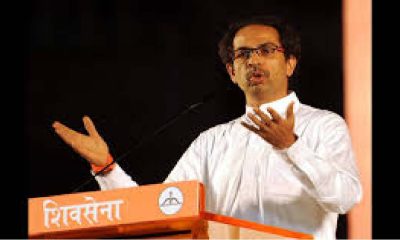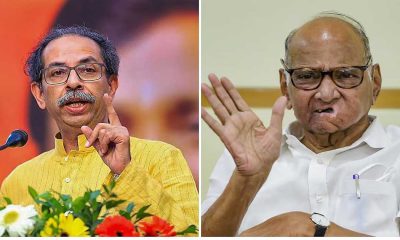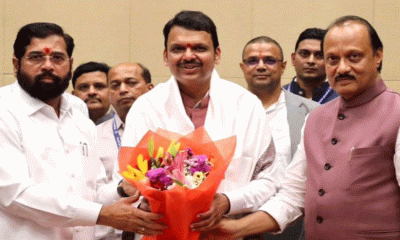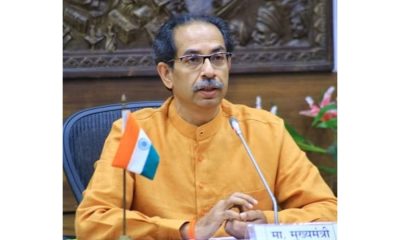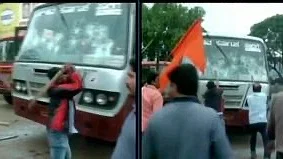Maharashtra
‘Oppressed and suppressed’ for long resulted in Sena revolt: CM Shinde
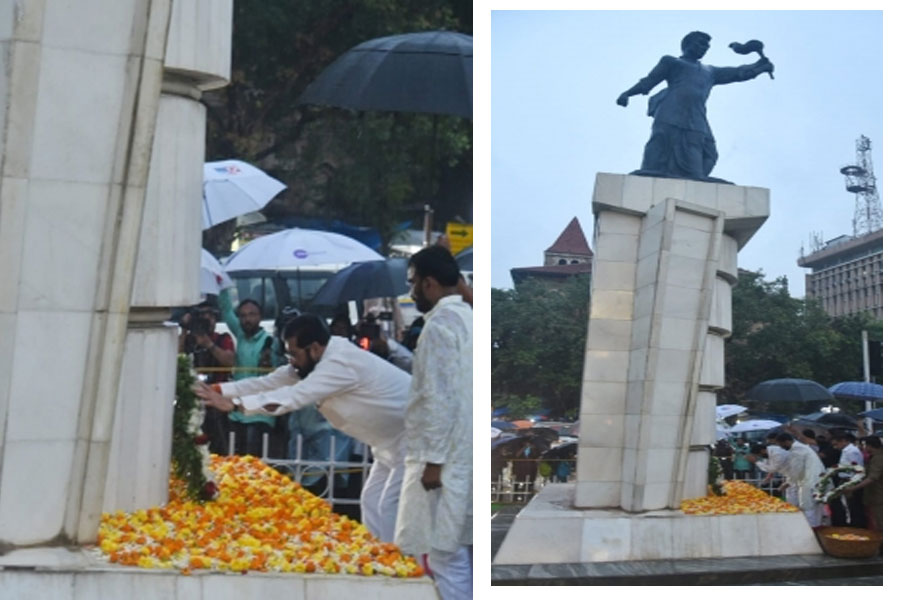
Maharashtra Chief Minister Eknath Shinde on Monday said he was ‘oppressed and suppressed’ for long and treated in an unfair manner that ultimately resulted in the major revolt that led to the collapse of the Maha Vikas Aghadi government headed by former CM Uddhav Thackeray.
In his maiden address to the Assembly after winning the crucial vote of confidence – 164 in favour and 99 against – Shinde recalled that the recent political happenings did not occur in just one day and was the culmination of many past instances when he was short-changed.
“There are many people here, like (Shiv Sena MLA) Sunil Prabhu, and others who have witnessed how I was treated and suppressed for long,” said Shinde, at times becoming emotional and sad.
He harked to NCP President Sharad Pawar, and how he had reportedly said that NCP-Congress leaders were unwilling to work under Shinde, and then he (Sharad Pawar) insisted that the Sena President Thackeray should assume responsibility as CM.
However, after the MVA came to power, Shinde mentioned how senior leader Ajit Pawar – the new Leader of Opposition – had told him that an ‘accident’ had taken place in the Shiv Sena and Congress-NCP was never against him (Shinde) becoming the CM.
In November 2019, the Shiv Sena joined the MVA alliance of Nationalist Congress Party-Congress which collapsed on June 30, 2022 after 31 months in office.
Hinting at a grudge even during the previous Bharatiya Janata Party-Shiv Sena regime, Shinde said he was promised the post of Deputy CM, and even BJP’s Union Minister Nitin Gadkari had assured him of a ‘good post’ soon – which never materialised.
“I was continuously harassed in the MVA, treated unfairly even during the assembly elections. So, I rebelled against all the injustice. I have got justice now. Even if we are martyred, we shall not retreat,” Shinde asserted.
He said that after the rebellion (June 20), the group of MLAs supporting him were branded as ‘traitors’, but said “we are not traitors, and fought for justice just as Balasaheb taught us.”
He described the two-and-half years in the MVA government as “not a very happy experience”, with people writing against Veer Savarkar and talking against Balasaheb Thackeray.
Shinde also elaborated on his fondness for the Sena where he grew politically under the guidance of Thane’s Anand Dighe and then Balasaheb Thackeray, terming the party as “my family where I spent my life”.
“I never hankered for any position. I am grateful to the BJP. Our natural alliance is with BJP. I tried to tell this to Uddhav Thackeray five times. The MLAs were asking how to remain in power with those who are anti-Hindutva. We are the Shiv Sainiks of Balasaheb and Dighe,” said Shinde.
“We will now establish the ‘aam aadmi and people raj’. In the next elections, we shall win 200 seats,” said Shinde.
In his speech, the BJP’s Deputy Chief Minister Devendra Fadnavis extolled Shinde’s virtues, his long political career, contributions and many sacrifices which were ignored for long.
Taunting at the trolls who roasted him for his ‘Mee Punha Yaeen’ (I will return) slogan of 2019, Fadnavis said: “I have indeed returned, and this time brought even Eknath Shinde with mea!”
However, now, he would take his sweet “revenge” by ‘just forgiving’ the trolls and critics who severely lampooned him for so long.
To the rants by some Opposition MLAs shouting “ED, ED” at some MLAs during the vote of confidence, Fadnavis shot back, saying “its correct that the new government is formed by ED – Eknath and Devendra.”
He also took a swipe at Thackeray, without taking his name, saying there was a ‘deficit in leadership’ in the previous regime, but now strong and dedicated leaders (Shinde-Fadnavis) would be available 24×7 to serve the people.
Maharashtra
Does Chief Minister Devendra Fadnavis know the meaning of jihad? Abu Asim Azmi
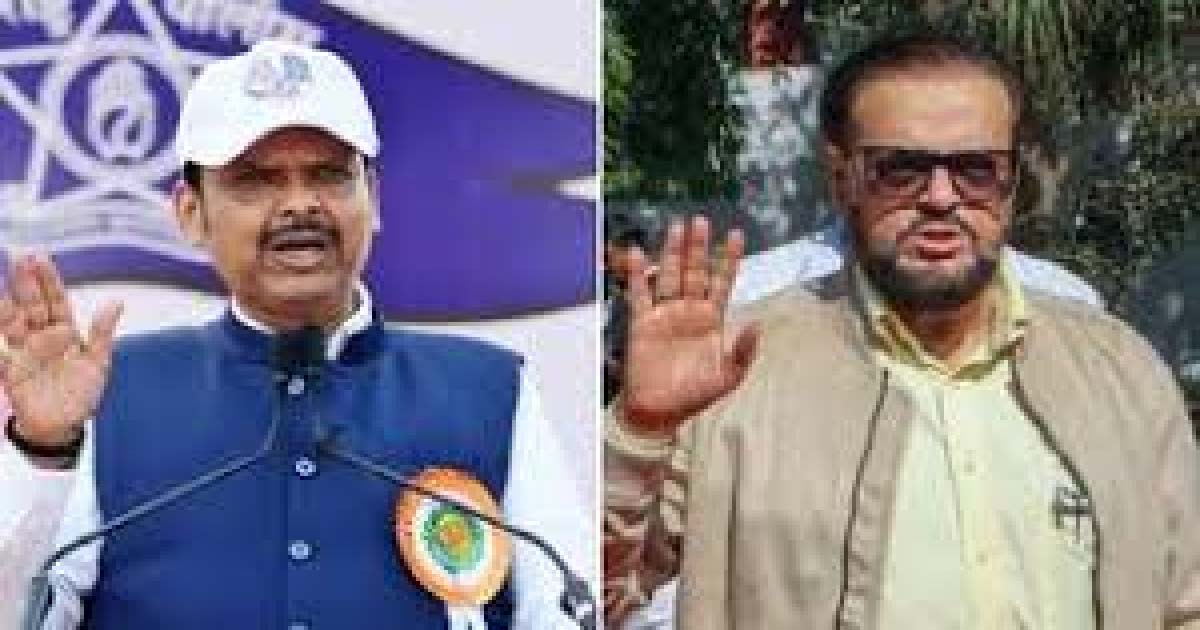
Mumbai: Abu Asim Azmi, a Samajwadi Party leader and MLA from Maharashtra, while commenting on the statement of state Chief Minister Devendra Fadnavis, said, “Does Chief Minister Devendra Fadnavis even know the meaning of jihad?” If issues like Hindu-Muslim, temple-mosque are removed from BJP, will it be able to contest elections? If I contest elections from their constituency, I may lose, but if the people they are oppressing do not vote for them, it will be called “vote jihad”. And I do not believe that Jamiat Ulema-e-Islam or any other reputable Muslim organization has ever supported those who spread hatred in the name of mosque or language, while the hate agenda of BJP creates division between Hindus and Muslims so that there is chaos in votes and BJP wins elections on the basis of caste. Muslims have never spread hate messages, but when a Muslim does not vote for such a extremist leader, it is attributed to vote jihad. Jihad is a sacred word, its term is being presented incorrectly. The term jihad is struggle and sacrificing for a good cause and country is jihad, but the communalists and the crits Soumya and Nitish Rane, including BJP leaders, have changed the definition of jihad, which is completely wrong. It is wrong and this kind of statement reveals their hostility towards Muslims. If despite this, if someone does not vote for them, they say that voting is jihad. If you work on a hateful agenda, who will vote for you?
Maharashtra
Properties worth Rs 41.64 lakh of notorious drug smuggler Naveen Gurunath Chechakar of Navi Mumbai frozen, Mini Cooper car also seized

In an effort to crack down on the illicit financial flow of the Mumbai drug network, the competent authority and the office of the Administrator, Smugglers and Foreign Exchange Manipulators (Forfeiture of Property) Act and NDPS Act have confirmed the freezing order issued by NCB Mumbai covering movable and immovable properties of the drug kingpin, GSD involved in multiple types of drugs. The value of the other frozen properties is ₹ 41,64,701/-.
On 27th January 2021, based on specific intelligence, the Narcotics Control Bureau, Mumbai Zonal Unit had arrested three accused in Belapur and Nerul area, Navi Mumbai and seized various types of drugs like cocaine, commercial quantity of LSD and Ganja. Prohibited items were being sold in Belapur and Nerul area of Navi Mumbai. Subsequent investigation identified accused and kingpin Naveen Gurunath Chachakar of CBD Belapur, Navi Mumbai, Maharashtra as the kingpin running an international and inter-state drug syndicate.
An intensive financial investigation was conducted to trace the assets acquired from the illegal sale of drugs. The investigation led to the identification of a bank account in Citibank and a luxury vehicle Mini Cooper, which were frozen in November 2025, with a total value of ₹41,64,701/-, which was confirmed by the competent authority in December 2025.
The main accused, Naveen Chachakar, is a habitual offender and a notorious drug smuggler in Belapur and Nerul area of Navi Mumbai. He has five NDPS cases registered against him – three by NCB Mumbai, one by Nerul PS and one by Customs. NCB Mumbai has arrested him after a long process of tracing and continuous efforts. They are currently in judicial custody in the above cases.
The NCB has appealed to the citizens to join the fight against drug trafficking. Information related to drug sale or trafficking can be shared anonymously on the MANAS National Narcotics Helpline (Toll Free) 1933.
Maharashtra
Maharashtra Politics: AAP Releases 2nd BMC Candidate List, Takes Tally To 36
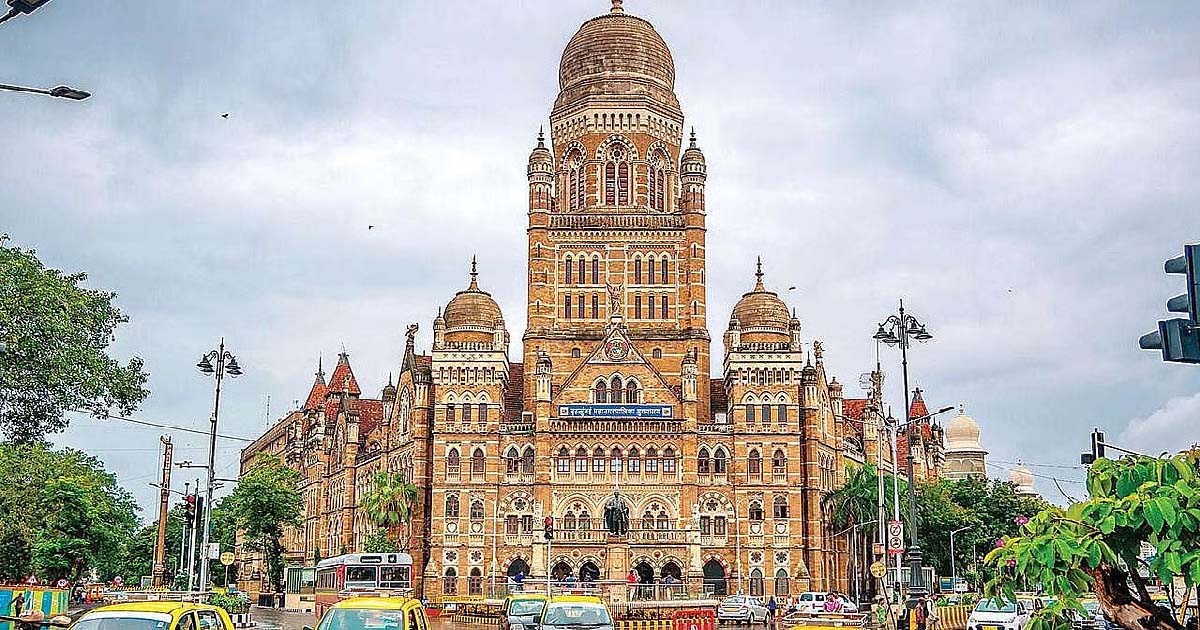
Mumbai: The Aam Aadmi Party (AAP) on Thursday released its second list candidates for the 2025-26 BMC elections, with 15 names. This takes the total number of candidates announced by the party to 36. Last week AAP in its first list has announced 21 candidates.
AAP in its debut in the BMC elections have decided to contest all 227 wards in Mumbai, ruling out alliance with any party.
“AAP releases it’s second list of candidates; while BJP, Congress, both the Shiv Sena factions and both NCP factions haven’t been able to finalise a single list so far. AAP candidates have hit the ground,” said party leadership said.
Speaking on alliance of the Thackeray brothers, Preeti Sharma Menon, the party’s Mumbai President said, “We are happy that two brothers have come together. But all we have seen is Uddhav and Raj Thackeray and the BJP’s Ashish Shelar trade barbs at each other. The Congress is as usual missing in the action. The fact is that all existing parties are status quo beneficiaries and have looted the BMC, whether as the ruling party or by being complicit as the opposition.”
“None of these parties have agreed on a single list, while the Aam Aadmi Party has hit the ground with our leader Arvind Kejriwal’s ‘Kaam Ki Rajniti’ and has already released two lists,” Menon said.
On Tuesday, AAP released it’s list of star campaigners for the 2025-26 BMC polls, featuring the party leadership across Maharashtra, Delhi, Punjab, Goa and Gujarat. The list of 40 campaigners includes it’s national leaders including former Delhi chief ministers Arvind Kejriwal, Atishi and other ministers including Manish Sisodia, Sanjay Singh, Punjab chief minister Bhagwant Mann and others, who will campaign in Mumbai.
MP Sanjay Singh last week said, “Despite being India’s ‘Urbs Prima’, Mumbai is in a mess. BMC has a whopping Rs. 74,447 Crore annual budget- the largest in Asia. Mumbaikars pay the highest taxes in the country and yet get shoddy public services. The BMC is a cesspool of corruption and monumental ineptitude. Every political party has looted Mumbai, prioritising their selfish interests over public good.”
Singh had highlighted that with just seven corporators, AAP will have a house leader and representation on all statutory committees, adding that when the party last contested the 2014 Lok Sabha polls, it got 5.16% of the vote share, which came to over 2,73,000 votes.
The voting for the 2025-26 BMC polls is scheduled on January 15, 2026 and counting of votes will be on January 16. The nomination papers submission for the candidate began on December 23 and will continue till December 30. The final list of candidates for all parties will be declared on January 3.
-

 Crime3 years ago
Crime3 years agoClass 10 student jumps to death in Jaipur
-

 Maharashtra1 year ago
Maharashtra1 year agoMumbai Local Train Update: Central Railway’s New Timetable Comes Into Effect; Check Full List Of Revised Timings & Stations
-

 Maharashtra1 year ago
Maharashtra1 year agoMumbai To Go Toll-Free Tonight! Maharashtra Govt Announces Complete Toll Waiver For Light Motor Vehicles At All 5 Entry Points Of City
-

 Maharashtra1 year ago
Maharashtra1 year agoFalse photo of Imtiaz Jaleel’s rally, exposing the fooling conspiracy
-

 National News1 year ago
National News1 year agoMinistry of Railways rolls out Special Drive 4.0 with focus on digitisation, cleanliness, inclusiveness and grievance redressal
-

 Maharashtra1 year ago
Maharashtra1 year agoMaharashtra Elections 2024: Mumbai Metro & BEST Services Extended Till Midnight On Voting Day
-

 National News1 year ago
National News1 year agoJ&K: 4 Jawans Killed, 28 Injured After Bus Carrying BSF Personnel For Poll Duty Falls Into Gorge In Budgam; Terrifying Visuals Surface
-

 Crime1 year ago
Crime1 year agoBaba Siddique Murder: Mumbai Police Unable To Get Lawrence Bishnoi Custody Due To Home Ministry Order, Says Report



